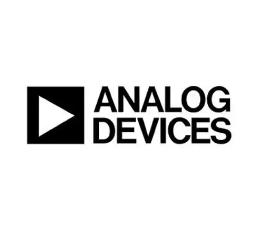**High-Performance Data Acquisition System Design Using the AD7767BRUZ-2-RL7 24-Bit Sigma-Delta ADC**
The pursuit of higher precision and dynamic range in data acquisition (DAQ) systems is a central challenge in fields such as industrial process control, scientific instrumentation, and high-end audio analysis. The design of such systems hinges on the selection and implementation of a high-performance analog-to-digital converter (ADC). The **AD7767BRUZ-2-RL7**, a 24-bit sigma-delta (Σ-Δ) ADC from Analog Devices, stands out as a premier solution for enabling exceptional performance. This article outlines the key considerations for designing a DAQ system around this advanced converter.
**Core Advantages of the AD7767BRUZ-2-RL7**
The AD7767 is engineered for precision. Its **24-bit resolution** provides an immense dynamic range, allowing it to discern minute signal variations in the presence of large DC offsets or other strong signals. A critical differentiator is its **programmable data rate**, which can be set up to 256 kSPS. This flexibility allows designers to optimize the trade-off between speed and noise performance, a concept known as the "Warp-Speed" mode. For instance, operating at lower speeds yields the **lowest effective noise floor**, ideal for DC or low-frequency measurements, while higher speeds cater to applications requiring wider bandwidth.
Furthermore, the device integrates a **programmable digital filter** with selectable characteristics, including sinc response. This on-chip filtering simplifies the anti-aliasing requirements and reduces the processing burden on the accompanying digital processor. The inclusion of an internal voltage reference and buffer further enhances integration, minimizing the external component count and simplifying the overall system design.
**Critical Design Considerations for a Robust DAQ System**
Successfully leveraging the capabilities of the AD7767 requires meticulous attention to several design domains:
1. **Power Supply and Decoupling:** The ADC's high resolution makes it exceptionally sensitive to power supply noise. A low-noise, highly stable linear regulator (LDO) is strongly recommended for the analog supply (AVDD). **Aggressive and strategic decoupling** is non-negotiable; a combination of bulk capacitors (e.g., 10µF) and low-inductance ceramic capacitors (100nF and 1µF) must be placed as close as possible to the AVDD and DVDD pins to suppress high-frequency noise and provide transient current.
2. **Clock Integrity:** The performance of a Σ-Δ ADC is intrinsically linked to the quality of its master clock (MCLK). A **low-jitter clock source** is paramount. Excessive jitter modulates the sampling process, degrading the signal-to-noise ratio (SNR) and effective resolution, especially at higher input frequencies. A dedicated clock generator or a crystal oscillator is preferable over deriving the clock from a noisy digital source like an FPGA.
3. **Analog Front-End (AFE) Design:** The ADC can only digitize the signal presented to it. Therefore, the driving circuitry must be equally high-performance. A **precision operational amplifier** configured as a driver/buffer must be selected for its low noise, low distortion, and adequate bandwidth. Proper RC filtering at the ADC's input is crucial to bandlimit the signal and prevent out-of-band noise from aliasing into the conversion bandwidth.
4. **PCB Layout:** A well-executed printed circuit board (PCB) layout is critical for achieving datasheet performance. Key practices include:

* **Separating Analog and Digital Ground Planes** and connecting them at a single point, typically under the ADC.
* **Keeping analog traces short, direct, and protected** by ground planes to minimize parasitic capacitance and noise pickup.
* **Placing all decoupling capacitors** immediately adjacent to the power pins they serve.
5. **Digital Interface and Data Handling:** The AD7767 features a serial interface for configuration and data output. To maintain data integrity, digital lines (like SCLK, DOUT, and SYNC) should be routed away from sensitive analog traces. The system microcontroller or FPGA must be capable of handling the high-resolution data stream at the desired data rate without introducing digital noise back into the analog domain.
**Conclusion**
Designing a high-performance DAQ system is a multifaceted endeavor that extends beyond simply selecting a high-grade ADC. The **AD7767BRUZ-2-RL7** provides a formidable foundation with its exceptional resolution, flexible data rates, and integrated features. However, realizing its full potential demands a holistic design approach. By meticulously addressing power integrity, clock quality, analog front-end design, and PCB layout, engineers can unlock the full 24-bit performance of this sigma-delta converter, creating a DAQ system capable of the highest levels of accuracy and dynamic range.
**ICGOODFIND:** The AD7767 is a top-tier choice for engineers demanding ultra-high precision in low-to-medium bandwidth applications. Its integrated features and performance flexibility make it ideal for complex measurement systems where accuracy is paramount.
**Keywords:**
* **High-Resolution ADC**
* **Sigma-Delta Modulation**
* **Low-Noise Design**
* **PCB Layout Techniques**
* **Dynamic Range**
